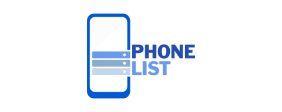Printed circuit boards are indispensable in industry today. They ensure that electronic devices such as our computers , our cars or our televisions function smoothly. Computer-aided machine tools therefore play a crucial role in various branches of industry. But where do these printed circuit boards actually come from and how are they manufactured? From the first printed circuit board design to the thermal transfer printer and the label software that later prints instructions and information on the printed circuit boards: in this article we explain step by step how printed circuit boards are made.
What is a circuit board anyway?
called circuit boards, circuit boards or printed circuits, are carriers for electronic components. They can be found in almost all modern electronic devices, such as computers, printers, radio alarm clocks and even vehicles. The printed circuit boards ensure that the various components of an electronic circuit are centrally attached and can be connected to one another.
An untreated, raw circuit board
First of all, a circuit board is an untreated raw board. 99 acres database This consists of an insulating material with a layer of copper. Before the connections can be made on the raw circuit board, a circuit board design must first be created. This determines which components and electrical connections should be arranged on the circuit board, how and, above all, where. This step is often carried out by computer programs these days.
Etching away copper and punching holes
In the next step, the circuit board design is used to etch away the copper in the right places and thus expose the conductor tracks. Then so-called registration holes are punched out and holes are drilled for the wired component assembly. An X-ray drilling machine is used for this in order to determine the registrations as precisely as possible.
exposure of the inner and outer layers
When manufacturing a printed circuit board, it is
extremely important that no dust is trapped when the the hottest apps of the moment layers are assembled, which could later lead to short circuits or interruptions. To avoid this, the various layers are thoroughly exposed and cleaned in a clean room.
Inserting components and soldering connections
Once everything is clean, the individual components are inserted based on the circuit board design and the connections are made and soldered.
Label the circuit board with a thermal transfer printer and label software
The assembly print of a circuit board shows which component is soldered where. This is a particularly important step to avoid future errors or failures and to simplify the maintenance and repair of the
circuit board. A thermal transfer printer and label software are usually used for this. You can design
your own labels using the thermal transfer printer and label software from CILS International .
contour milling and final dimension machining
After the circuit board has been labeled using a thermal transfer printer and label software, the
contours are milled and the circuit board is separated from the production panel. Alternatively, the circuit board can also be processed with a scoring machine in this step. This creates a V-shaped score and leaves behind a thin piece of material that will later hold the circuit boards together.
testing the circuit board
Finally, each multilayer of the circuit board is tested b2b reviews in detail. The circuit board data and the circuit board design are used for comparison. Testing is usually done with a so-called finger tester , which ensures that there are no short circuits or interrupted connections when the circuit board is in use. If everything is OK and has been professionally labeled with a thermal transfer printer and label software , the circuit board can then be used.

